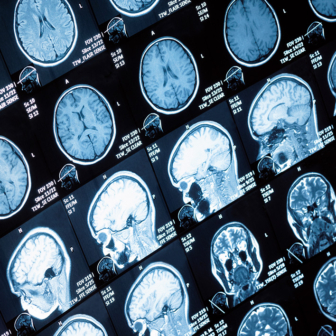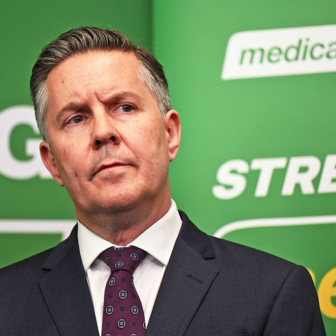“Medicine and dentistry remain distinct practices that have never been treated the same way by the healthcare system, health insurance funds, public health professionals, policymakers and the public. Medicare was established to ensure all Australians have affordable access to healthcare, but from the beginning routine dental care was excluded. It is a separation that is increasingly hard to rationalise on health grounds.”
It’s almost a decade since I wrote those words in the Medical Journal of Australia — and yet, despite a succession of papers, reports and policy proposals, surprisingly little progress has been made. The consequences, and the dollar costs, of poor oral and dental health, often preventable, continue to drag on the community.
It’s well recognised that dental decay and tooth loss can cause pain, problems eating and speaking, and loss of self-esteem. But poor oral health is also linked to heart disease, diabetes, stroke, pneumonia, autoimmune diseases like rheumatoid arthritis, chronic kidney disease, dementia, low-birthweight babies and more. In older people it is associated with a greater risk of all-cause mortality.
Apart from poor dental hygiene, oral ill-health can be brought on by certain medical conditions and treatments, including diabetes, HIV/AIDS, osteoporosis, lupus, Sjögren’s syndrome (dry mouth), chemotherapy and radiotherapy, and a range of medications.
Dentists play a key role in screening for oral cancers. While these cancers are more common in older smokers, recent research shows an increase in diagnoses among young Australians without identifiable risk factors. In particular, the number of women under forty-five diagnosed with tongue cancer is rising significantly faster than for women over forty-five and men.
For those reasons alone, better integration of dental and medical care should be a priority. Many patients with coexisting medical and dental issues require multidisciplinary care plans involving doctors and dentists. Collaboration of this kind improves the quality of care and its results, including patients’ quality of life.
Given the costs (to both the healthcare system and patients) and the consequences of a failure to better integrate dental and medical care, increased access to affordable dental services should be a particular priority. This need could and should be considered separately from the provision of universal dental care: it goes beyond the preventive and early-intervention measures that ensure a healthy smile to the health of the body as a whole.
The current system’s failures are especially pronounced for two categories of patients: those with congenital heart disease, or CHD, and those with cancer, especially cancers of the head and neck. Patients with CHD and gum disease are particularly at risk. The bacteria that cause gum disease can cross into the blood stream, enter the heart chamber and directly infect the valves. These patients need special care for even the simplest dental procedures, and additional screening and safeguards before any surgery.
A German study published in 2022 found that children and teenagers with CHD were significantly more likely to experience dental decay and inadequate dental hygiene. This may be because their regular hospitalisation is interfering with normal dental check-ups, a deficiency exacerbated by a shortage of experienced paediatric dentists.
There’s no reason to believe the situation is any different in Australia. While national data are lacking, the paediatric dental team at Westmead Children’s Hospital found that about 27 per cent of children with CHD had a history of dental infections. The cost of extractions (the majority of services) and restorations under anaesthesia for these children is substantial: the mean number of days in hospital was 1.43 and the mean cost was $4395 per child treated. The paper makes the point that clear referral pathways to dental care are a key need for children with CHD.
Richard Widmer, the leader of the team, told me that he and his colleagues often spend many hours and thousands of dollars on dental care before Westmead’s patients, often from regional and rural New South Wales, can get the operations they need. This is a potentially avoidable burden on the public health system and obviously distressing for the children.
A witness at the current parliamentary inquiry into dental services described how a patient at St Vincent’s Hospital in Sydney had a left-ventricular assist device implanted at a cost of more than $150,000. This life-saving work was almost undone because his poor oral health, which was not assessed before the operation, caused a life-threatening infection. The patient needed costly intensive care and further surgery.
Cancer patients — especially patients with head and neck cancers — also need special attention. They often have poor dentition to start with, have faced surgery, chemotherapy and radiation therapy, and must then manage chronic dental problems that frequently worsen over time.
Nectarios Andrews, a dentist who works with multidisciplinary head and neck teams at several Sydney hospitals, describes the people he works with as the “most vulnerable of patients” who have “already battled a cancer diagnosis [and] are too often doomed to a life of devastating dental pathology with crippling functional and emotional outcomes.”
New technologies and techniques are delivering remarkable results for these patients. Jonathan Clark’s team at Chris O’Brien Lifehouse in Sydney has a dedicated craniomaxillofacial reconstruction program that combines advanced reconstructive surgical techniques (using dental prosthetics produced by 3D printers) with virtual surgical planning (where the surgery is digitally simulated to increase the accuracy of reconstructive surgery). Evidence suggests these procedures deliver clinical benefits and increased rates of dental rehabilitation, leading to improvements in key health-related quality-of-life outcomes, including speech, aesthetics, swallowing and eating.
Too often, though, the amazing multidisciplinary treatment and care delivered to these patients in (mostly public) hospitals can’t be completed because specialised dental services are lacking. Hospital-based dental services are only available for low-income healthcare card holders and most patients with head and neck cancers can’t afford private dental care that can cost as much as $100,000 beyond what is covered by health insurance. Some patients have very complex requirements for which general dentists are neither trained nor equipped.
As impressive and affordable as the work is at Chris O’Brien Lifehouse, only one-in-ten patients are dentally rehabilitated following oral cancer surgery. New public and private funding options are needed to improve patients’ access to these services. As it currently stands, many patients come through extensive surgery and treatment for oral cancers only to face poor quality of life because they can’t get access to dental prostheses and ongoing dental care.
Better links between oncology, hospital-based dental services and private dentistry are also needed. Dental information is shared in some but not all cases to assist dentists looking after these patients in the community, but dental records are excluded from My Health Record. This information is crucial: cancer patients who have had, for example, extensive radiation to their jaw are at risk of poor healing after dental extractions.
Australia’s National Oral Health Plan 2015–2024 identifies four priority population groups with relatively poor oral health and inadequate access to care. These include people with additional and/or specialised healthcare needs, a category that covers most of the patients described above.
The parliamentary committee’s interim report makes mention of the need for greater coordination between medical and dental services. It quotes one witness stating that “preventing (oral) infection is a medically necessary service and therefore essential health care” (emphasis in the report).
Peter Foltyn, a consultant dentist at Sydney’s St Vincent’s Hospital, is quoted as recommending that any oral and dental health services needed before medical treatment should urgently be integrated into the Medicare Benefits Schedule, or MBS, and that medical undergraduate training should include education on the important relationship of oral health to systemic health.
If they meet certain requirements, dentists already have access to a number of MBS items. These include items for multidisciplinary case conferencing and the preparation of treatment plans for cancer patients; consultations (including telehealth) for oral and maxillofacial patients; and assistance at operations. But no analysis of the use of these items is publicly available, and they apply only to services delivered either in the community or to private patients.
Even if new Medicare items and increased funding for public services were provided tomorrow, little will change for patients unless and until medical and dental cultures change and professional siloes are broken down. This has been done successfully in other medical settings — mostly in multidisciplinary cancer teams — but this kind of integration needs to be universal.
The key barrier is medicine’s and dentistry’s distinct education systems, clinical networks, records, and funding and insurance arrangements. Necessary changes would include interdisciplinary education, shared training, and a recognition that dental services are an integral part of primary care and essential for the treatment of some medical conditions.
An article published several years ago in the Australian Journal of General Practice did an excellent job of exploring the history of the medicine–dentistry divide and the challenges it creates, and suggested how these might be tackled. Its authors made a strong case that education is the place to start.
A 2018 study of the hours dedicated to oral health education in medical schools in Australia highlighted that imperative. It showed that Australian medical school graduates have little if any foundational knowledge of oral health, including dental caries, oral cancer, dental emergencies, and the relationship between diabetes and periodontal disease. Only a few hours in multi-year programs were dedicated to teaching these topics, and no medical school reported hands-on training in an oral health setting.
We can hope that things have changed since that study was published, but only an optimist would believe that the shift has been sufficient to overcome the current siloes.
It’s time for the federal government to make the system changes and introduce the financial incentives across both the public and private sectors that will push medicine and dentistry into a partnership to improve health and health outcomes for all Australians, starting with those most affected by poor dental and oral health. •




